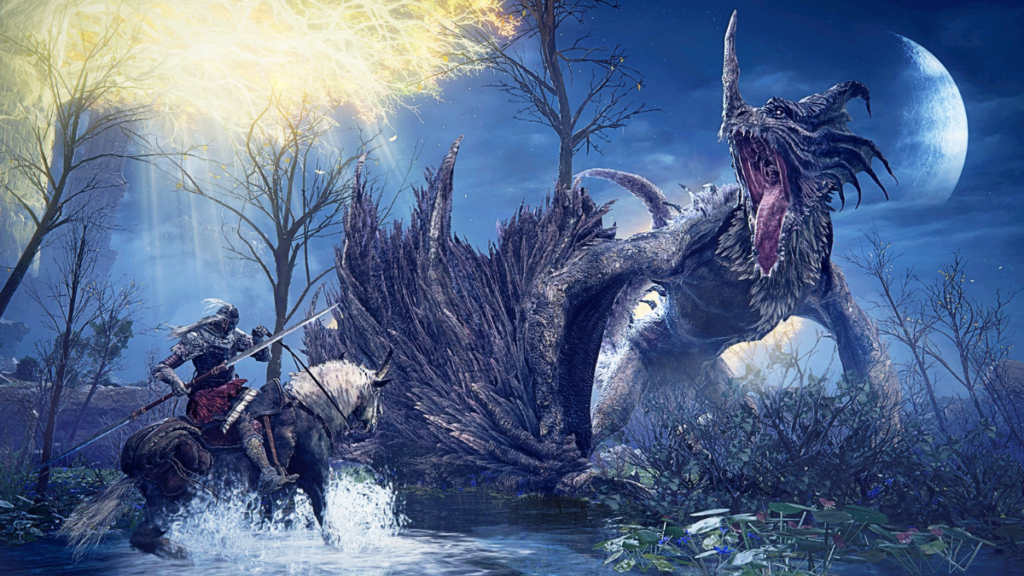Open-world games have a unique way of pulling players into their worlds, making them feel alive, real, and explorable. Whether you’re traversing the vast landscapes of ‘The Legend of Zelda: Breath of the Wild’, navigating the dense streets of ‘Grand Theft Auto V’, or wandering the hauntingly beautiful lands of ‘Elden Ring’, these games create an illusion of freedom and presence unlike any other genre.
But why do some open worlds feel so immersive while others fall flat? The answer lies in spatial memory and cognitive mapping—the brain’s ability to understand, navigate, and recall spaces. Game designers leverage these principles to make virtual worlds feel intuitive, engaging, and memorable.
The Science of Cognitive Mapping in Open-World Games
Cognitive mapping refers to the mental process of internalizing spatial relationships. In real life, we unconsciously map out cities, homes, and landscapes, remembering key landmarks and routes. In gaming, the same process applies—players develop an understanding of virtual worlds without relying on mini-maps or waypoints.
Great open-world games use design techniques that naturally guide the player’s brain to create:
- Intuitive navigation – Players instinctively remember where important locations are.
- A sense of exploration – Well-designed worlds reward curiosity, making every discovery feel meaningful.
- Emotional connections – Familiar landmarks and environments make players feel at home.
By designing worlds with strong cognitive anchors, developers ensure players immerse themselves in the environment instead of relying on the UI to get around.

Key Design Elements That Enhance Immersion
Landmarks & Visual Anchors
The most immersive open worlds use iconic landmarks that make navigation feel natural. Just like how real-world cities have skyscrapers, monuments, or mountains as reference points, games use:
- Towering structures (Skyrim’s Throat of the World, Elden Ring’s Erdtree) to orient players.
- Unique geographical features (Red Dead Redemption 2’s snowy peaks and deserts).
- Memorable cities and hubs (GTA V’s Vinewood sign, Assassin’s Creed’s historical landmarks).
These landmarks allow players to mentally map the world, reducing reliance on UI elements like maps and quest markers.
Natural Pathways & Organic Flow
Great open-world design subtly guides players without forcing them. Instead of rigidly defined paths, developers use:
- Rivers, roads, and cliffs to funnel movement naturally.
- Lighting and colour contrast to highlight points of interest.
- Elevation and vantage points that invite players to scan the environment.
For example, ‘Breath of the Wild’ masterfully leads players toward shrines and settlements using subtle environmental cues instead of intrusive quest markers.
The Role of Scale & Proportion
A world that’s too empty or too crowded can break immersion. The best open-world games balance:
- Distant vistas that make the world feel vast but reachable.
- Densely packed urban areas (Cyberpunk 2077, The Witcher 3) to enhance realism.
- Spacious wilderness that feels alive with wildlife and weather effects.
This balance ensures that every area feels purposeful and explorable rather than just filler space.
Rewarding Exploration & Memory
The best open-world games encourage players to remember locations through meaningful discovery. Instead of relying on maps, players engage in:
- Environmental storytelling – Ruins, abandoned buildings, and scattered notes provide backstory (Dark Souls, Fallout).
- Hidden paths and shortcuts – Games like ‘Hollow Knight’ and ‘Elden Ring’ reward players who pay attention to their surroundings.
- Dynamic world events – Unscripted encounters, like ‘Red Dead Redemption’ 2’s random NPC interactions, make the world feel alive.
When players rely on their own memory rather than UI tools, they feel truly immersed in the world.
A Sense of Place & Belonging
Memorable open worlds make players feel emotionally attached to certain locations. This happens when:
- NPCs and cultures make cities feel alive (Skyrim’s Whiterun, The Witcher 3’s Novigrad).
- Music and ambient sound define different regions (Zelda’s Hyrule Field, GTA’s radio stations).
- Personal impact on the world – Choices that alter the environment (Fallout’s settlements, Red Dead Redemption 2’s camp interactions).
When players feel connected to the world, it transitions from just a game space to a place they want to return to.
Why Some Open Worlds Feel Empty or Forgettable
Not all open-world games succeed in immersion. Some common design mistakes include:
- Repetitive environments – If every location looks the same, players struggle to form mental maps.
- Too many UI markers – Overloading the screen with waypoints removes the need for exploration.
- Lack of interactivity – If the world feels static, players won’t feel engaged (Far Cry’s lifeless outposts vs. Red Dead’s dynamic NPCs).
Games that fail to consider spatial memory and organic discovery often feel like checklists rather than living worlds.
The Power of Cognitive Mapping in Open-World Games
The most immersive open-world games don’t just drop players into a large space—they design environments that players can naturally navigate, remember, and emotionally connect with. By leveraging landmarks, organic pathways, and rewarding exploration, game developers craft virtual worlds that feel just as real and immersive as the ones we live in.
So next time you’re playing an open-world game, take a moment to notice how you’re finding your way—chances are, it’s not just the map guiding you, but your brain’s own cognitive mapping system at work.
–Silviya.Y
